It’s a dream destination for many of us. But once you’re on the ground, leaves fluttering overhead, glittering eyes in the dark, what is there to do in the Amazon Rainforest?
Quite a lot as it turns out…
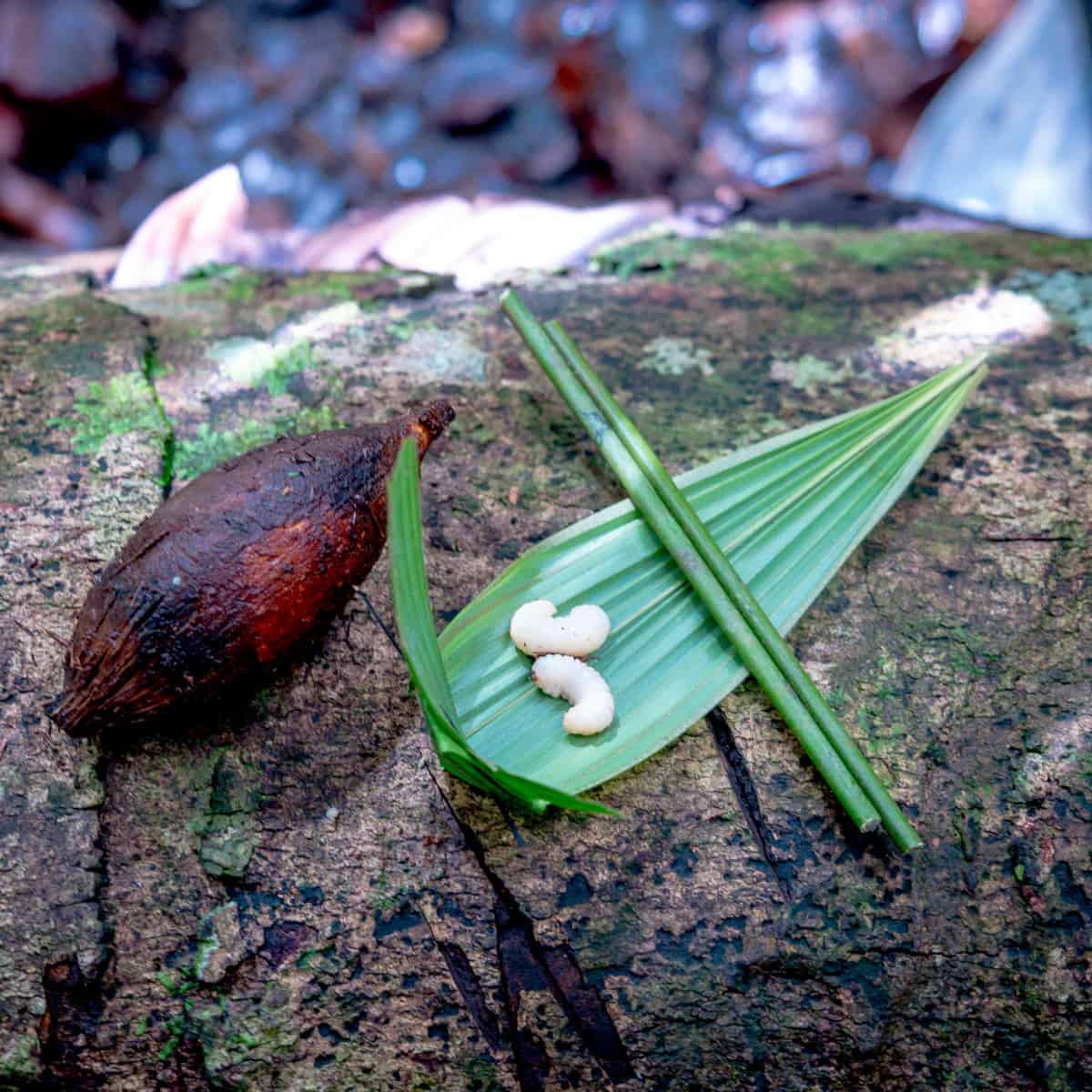
What To Do in the Amazon Rainforest
“To survive here,” the voice said through the dark. “You have to be big. You have to be clever. Or you have to be poison.”
The voice belonged to Ralf, our native-born guide to the waterways and canopies of this slice of the Brazilian Amazon rainforest.
One thousand glittering eyes stared like riverside starlight: spiders lit up by Ralf’s solitary torch as our canoe drifted into stillness.
Fire flies and glow worms danced through the night, the torch flitting from tree frog to tree frog, scanning for snakes and resting on the burning orange gleam of the crocodilian caiman.
And by morning, when the sun rose at five through the net-lined window by my bed, casting shadows onto timber, it finally began to feel real.
Here I was, a visitor in a childhood dream. A traveller in the Amazon.
What is The Amazon?
As possibly the most famous forest on earth, the Amazon has some heady, heavy statistics to satisfy its swagger onto bucket lists around the world.
The Amazon basin covers 2.7 million square kilometres, the forest 2.1 square million km. This is more than half of all the world’s rainforests, supplying 20% of our planet’s oxygen and providing a home to approximately 10 million species of animals, plants and insects, in other words, 10% of all the known species in the world.
It covers nine countries (Brazil, Peru, Ecuador, Colombia, Venezuela, Bolivia) and has existed for at least 55 million years.
That’s a lot of millions, isn’t it?
But it’s not just the numbers that matter, the words do too.
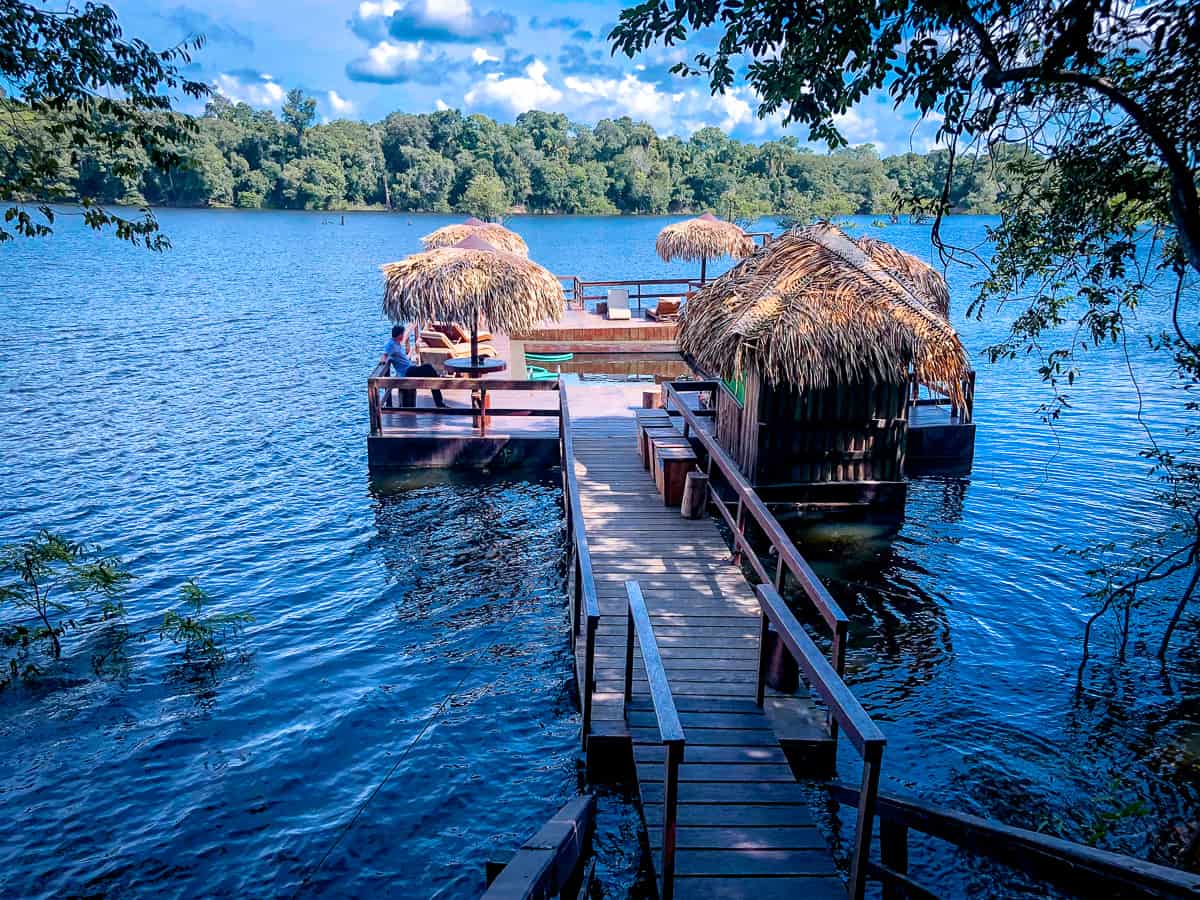
Amazon Terminology
The Amazon refers to the river, Amazonia to the forest and Amazonas refers to the region in Brazil, owner of 60% of the forest land. That includes the part where I found myself in a hammock, socks pulled over my trousers, doing anything to avoid a bite.
In actual fact, this part of the rainforest makes a great spot for visitors. The dense fall of leaves turns the water brown and lowers its pH, deterring some of the cleverest and most poisonous of creatures: the mosquitoes. In all the time I spent here, limbs covered all the time, I picked up no more than six or seven measly bites.
Not that life here should be measured in red, blotchy welts, nor the fear of potentially hostile inhabitants.
It should, and can, be measured in joy and a fully lived life. It’s also on the easy side, only three hours from big city Manaus, a place that made its name with a rubber boom and which connects easily by air to São Paulo and beyond.
Tourist Attractions in the Amazon Rainforest
Time to talk about the best things to do in the Amazon.
But for all the fame, the serious stats, the dizzying diversity and the bustle and hustle of Manaus, there is one question that remains: what is there to do in the Amazon rainforest?
With no safari style big game, few bright flowers and a rightfully dutiful eco-tourism, you could be forgiven for thinking that the only thing to see is 2.1 square kilometres of green.
After a boat ride, a van, and an Amazon river cruise through said water and air-based green, I can spill the brazil nut beans. I can tell you all about the tourist attractions in the Amazon rainforest.
And in the spirit of the place, let’s start with a proverb:
“When it comes to the jungle,” says Ralf, full of stories from indigenous peoples. “Everything takes patience.”
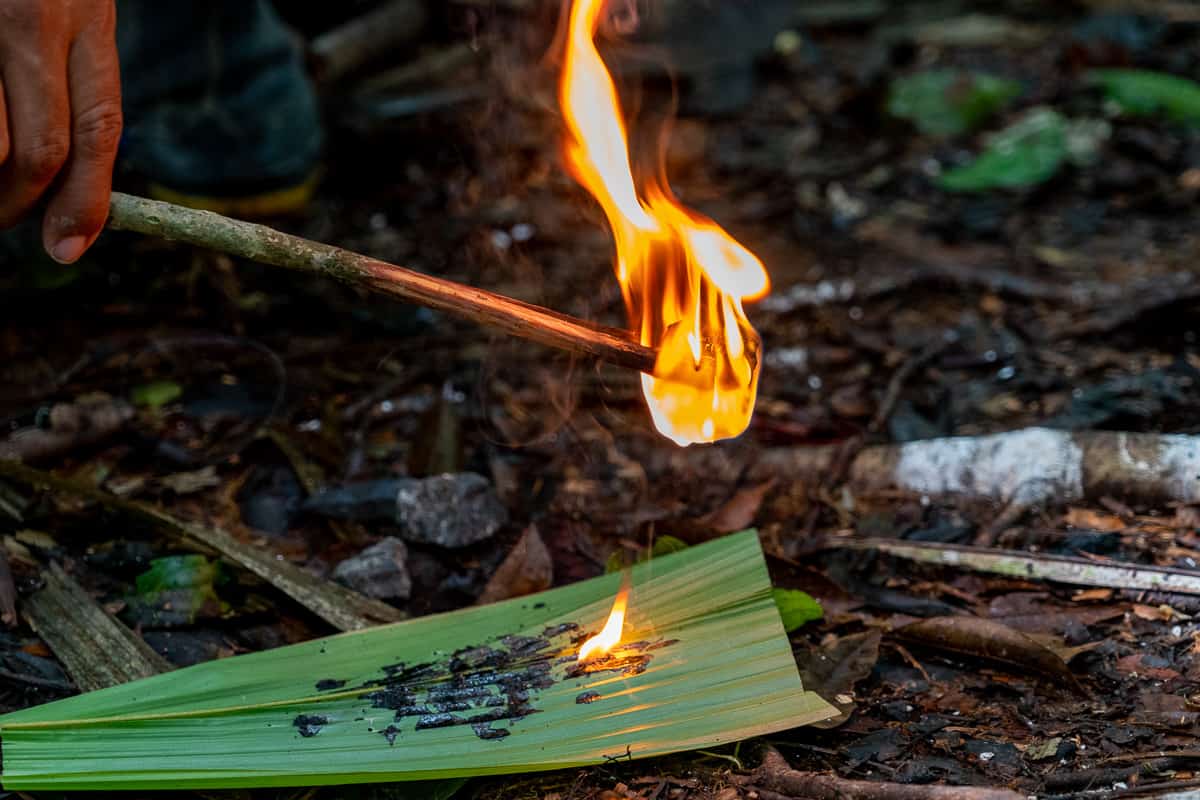
Highlights of the Amazon Rainforest
Enjoying a trip here isn’t about a checklist of activities. It’s about surrendering to the knowledge of nature with a hefty dollop of respect for how she operates.
After all, we learn on our three hour Amazon jungle trek. Everyone has their place.
“Jungle wifi,” says Ralf, knocking on the trunk of the paracuta tree. Its velvety folds of tough bark lead to a sonorous sound that echoes through the forest. “500 GB and the battery never runs out,” he continues.
“If you get lost, find this tree and call for help.”
He then pauses. “If you reach the end of the walk, we’ll have a barbecue by the water. If you don’t reach the end, you’ll be the food.”
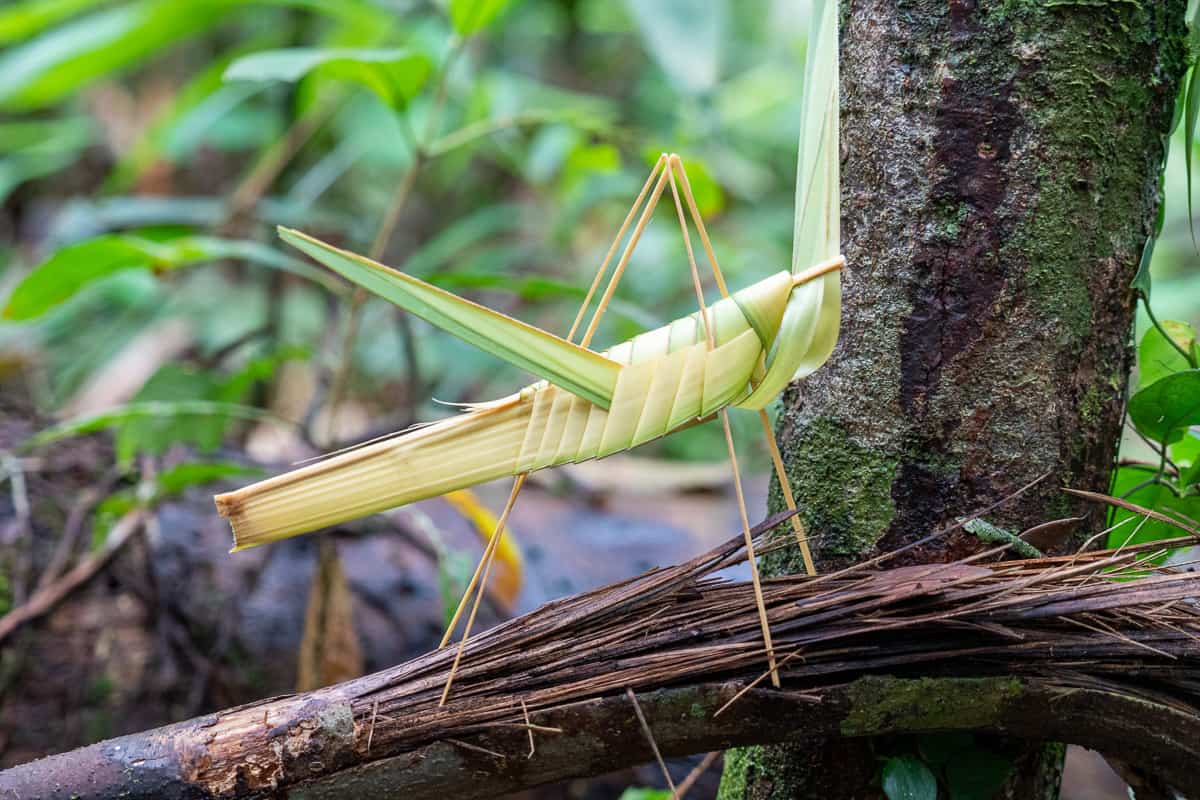
There’s a thrilling mix of danger and theatre to this, of course. The Juma Lodge is a reputable business. They are unlikely to get far if their guests keep getting eaten. And though the lodge doesn’t have wifi and many of the 62 tribes don’t have any electricity at all, some do. Change is coming here as it is everywhere, and we all must find a way to adapt.
At home, we teach children not to cross the road without an adult. Here, it’s how to avoid the lethal swallow of an anaconda and an array of deadly plant species. Same, same but different.
But I’m getting ahead of myself. First, we must start with the canoe.
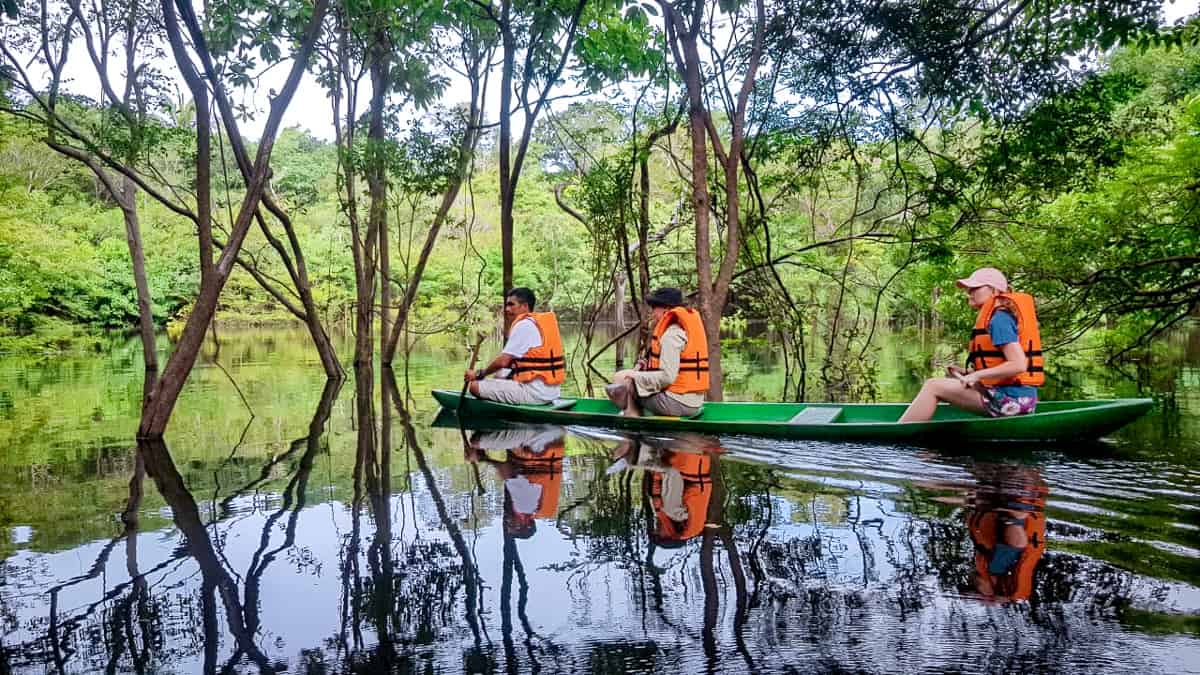
Paddling by Canoe in the Amazon Rainforest
Like every community surrounded by water, from the Tlingit in Alaska to the watering holes of the Okavango Delta in Africa, moving on top of the water has always been crucial in the Amazon rainforest.
“Everyone owns a boat,” says Ralf. “You have to. It’s the only way to get around.”
These days, most have a motor, but the traditional canoe is still used for short trips and visiting neighbours among local communities.
The water of the Amazon is unusual in that the surface level rises and falls by 15 metres every six months.
Read that again. The water in the Amazon rises and falls by 15 metres every six months. That’s the height of a building.

Houses are either bound to rubber tyres, or, in their more traditional form, built on giant wooden stilts, teetering like Bambi or a malnourished, inebriated spider above the river in the dry season.
This change in water also means the landscape can seem strange: tree trunks protrude, upright, into the water. Leafy twigs, rather than seaweed, catch on the oar.
But it does make for an excellent canoe ride.
Our first stop at Juma Lodge was to squeeze into canoes: treacherous, precarious looking things, built of wood but seemingly folded from cigar papers and liable to tip at any moment.
Is it dangerous?
It is a strange thing to constantly be only a few centimetres from your death from your mode of transport. But then again, the same could be said, I suppose, for driving on the M4 from London to Bristol.
At least this is quieter. No artificial lights. And absolutely no talk of Brexit on the radio.
Instead, the growls of the monkeys, the shriek and shrill of the toucans and the comforting call of the crickets fill the air with a satisfying richness. And in between, the rhythmic-ish sound of our paddles in the water: plop, swish, paddle, plop.
What we see are the small, but let’s not forget that the Amazon holds the big.
The anaconda, panther, and jaguar call this place home.
But for now, we are safe on the water. Tomorrow, we will leave our jungle lodge journey on foot.
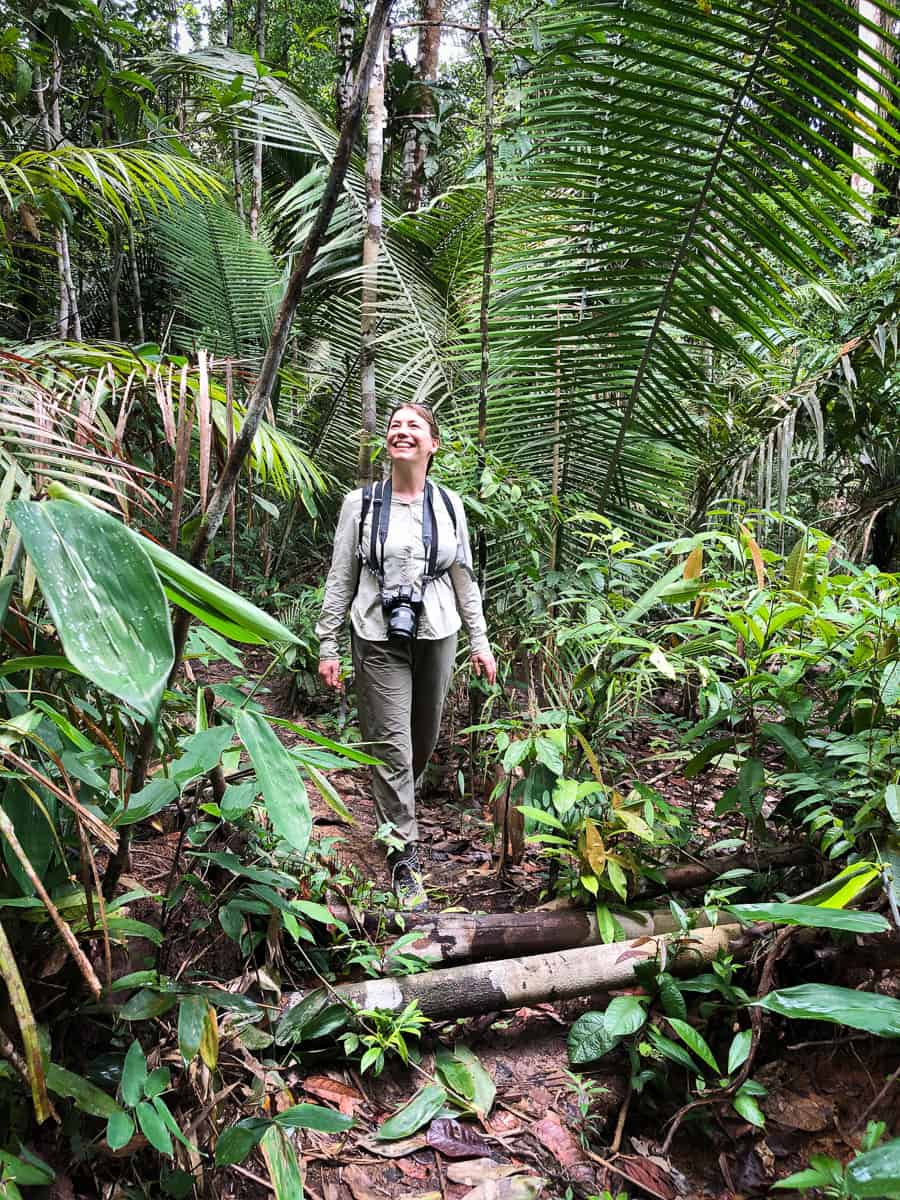
A Jungle Walk or Forest School in the Amazon
“Put your hand in the ants,” he suggests. “It works as a natural insecticide.”
This is but the beginning of our Brazilian forest school. After the ants, it’s time for sushi: juicy coconut-coloured larvae served on a hand-folded origami leaf with chopsticks.
But the most powerful, and even meditative event, is watching tree sap change into gunpowder.
Back at the paracuta tree, the clear sap drips from the bark. Over time it dries into a dark block, like sugar-stirred coal. Ralf lights this, letting the drops fall thick, black and slow onto an outstretched leaf.
It takes time.
Time.
Time.
We stand in the thick humidity, watching ants, listening to the call of the monkeys birds.
Time passes.
In all honesty, it probably is not that long. Less than fifteen minutes. Maybe much less than that. But in this digital age, I realise how rare it is that for once, I’m not doing anything, and for another, I have no idea of the passage of time.
Drip. Drop. Splot. Splat.
It is done. Ralf straightens up, blows the drops dry and lifts the leaf in the air.
Now for the revelation. He rolls the leaf into a cylinder, a kind of cigar. And like that, grey gunpowder falls from the centre. Made right before our eyes.
But we can’t stay here forever.
“If you finish the walk, we have lunch,” says Ralf. “If not, you are the snack.”
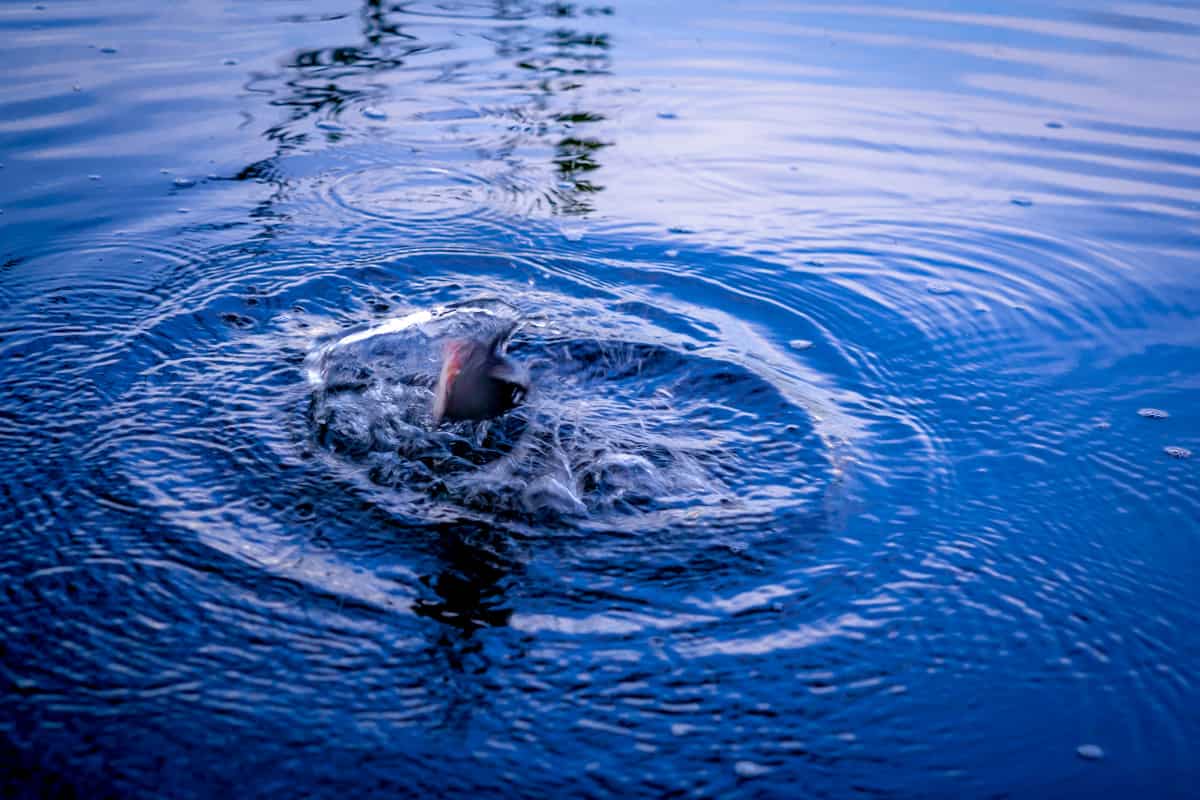
Piranha Fishing
Speaking of snacks, another great pastime is to sit in the precarious feeling boat, dangling bait over the side to attract the kind of things that are attracted by blood.
Piranhas.
Not, as it turns out, simply a cool plot device in a James bond movie, piranhas are real and so are their bites.
Ralf showed me a video of his sister, fishing for a bank holiday soup. She dips a piece of intestine into the shore (yes, that’s right, that bit of water right by the land) and pulls out around 20 or 30 chattering, biting, smiting fish. Into the scalding pot they go and she pulls off the manoeuvre again.
“If you went in the water, you’d be dead in five minutes,” came the soundtrack from her brother.
And so, as the sun sets in ripples of burned orange mixed with blue, we are attempting much of the same thing but from our (un) trusty canoes.
In all honesty, my bait fell off and I “forgot” to replace it, so I’m just taking in the view.
Until.
Until, all of a sudden, a great chattering, cheering, screaming and gnashing takes place and a piranha thrashes right by my face. My fellow passenger and countrywoman was not so “forgetful” and in the dance of victory, accidentally swung the fish right over my face.
A few minutes later, one escapes the hook to slip and snarl and snap on the boat, an event that very nearly led to one passenger overboard.
And they say that fishing is a dull and quiet sports game.
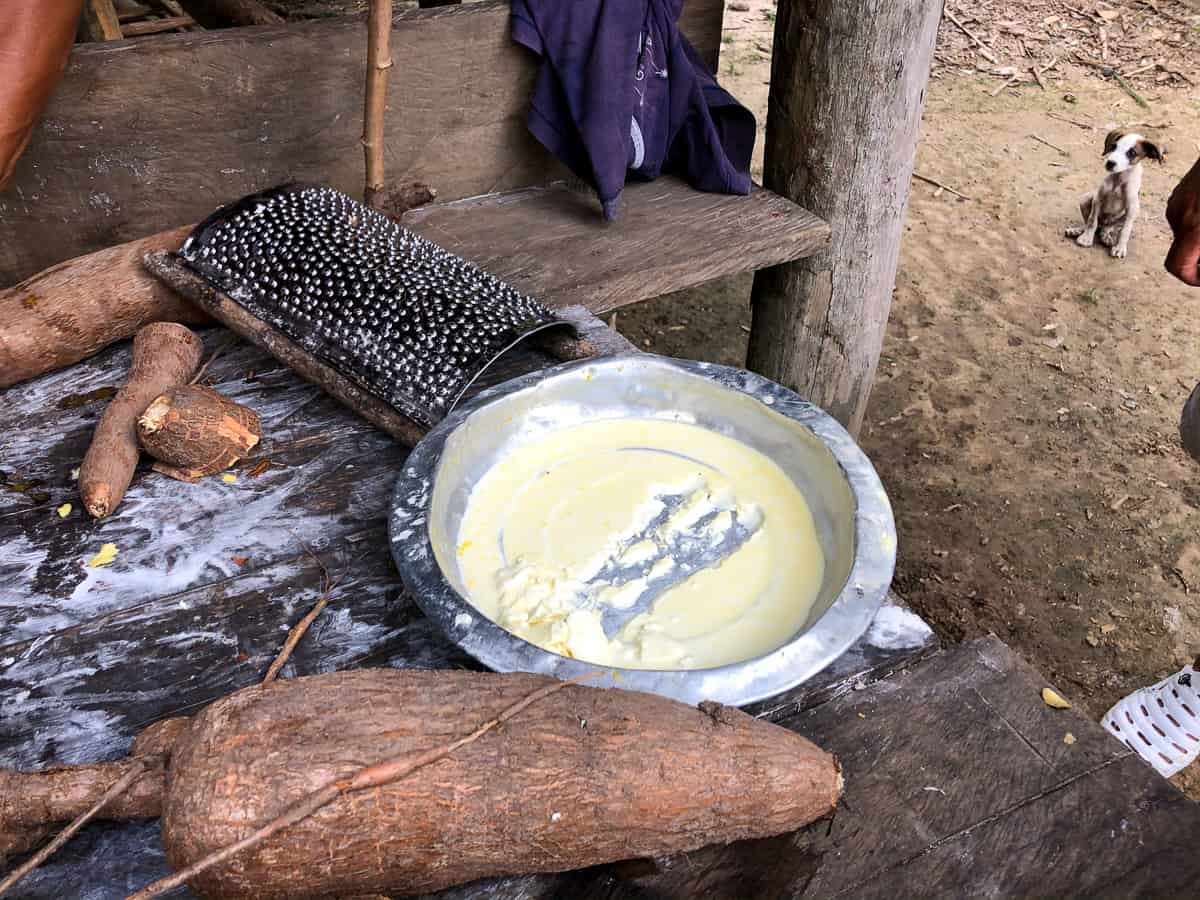
Learn Local Traditions
One of my favourite parts of the trip to the Juma Lodge involved the trip to a local farmhouse. These activities can often be hit and miss, sometimes feeling uncomfortably voyeuristic or entirely inauthentic.
But this was spot on.
In our small group of four, plus ever steady Ralf and our boat driver, we visited a local farm and were invited to watch magic.
Not magic, exactly, but just the knowledge of the jungle. How one unassuming brown cassava root was grated, scrunched and separated in front of our eyes to create three separate substances we’d become familiar with in the jungle.
Manioc flour, canary yellow tucupi sauce (poisonous when prepared incorrectly, of course) and tapioca.
After that came the herb garden, the sugar cane crushing, a fresh coconut and a dash of lime to finish it off. Delicious.
The visit revealed the depth and richness of knowledge that people have who live here – but also the daily manual labour and relentlessness of all farm work. Food for thought, along with the sugar.
How Can I Help Save the Amazon Rainforest?
Honestly? Support ecotourism not charity. This is a hard lesson I learned years ago when interviewing a banker who had switched to setting up “charitable foundations” in Thailand.
He told me that the trouble with charities is that you strip people of their independence and that you are held hostage to the whims of the donors. Things fall in and out of fashion. This isn’t to say that charitable giving is wrong, it absolutely isn’t. In the midst of crises, whether human and political or environmental (and let’s face it, they all go hand in hand) it can be vital when organised well.
But for the long term, as part of sustainable tourism, we need to make places more valuable alive than dead.
Which would you prefer? Being told you couldn’t earn a living and had to continue living with outdated technology and handouts? Or working as part of a thriving ecosystem that also provided for residents and guests.
Support responsible tourism. Travel to the Amazon and interact with people!
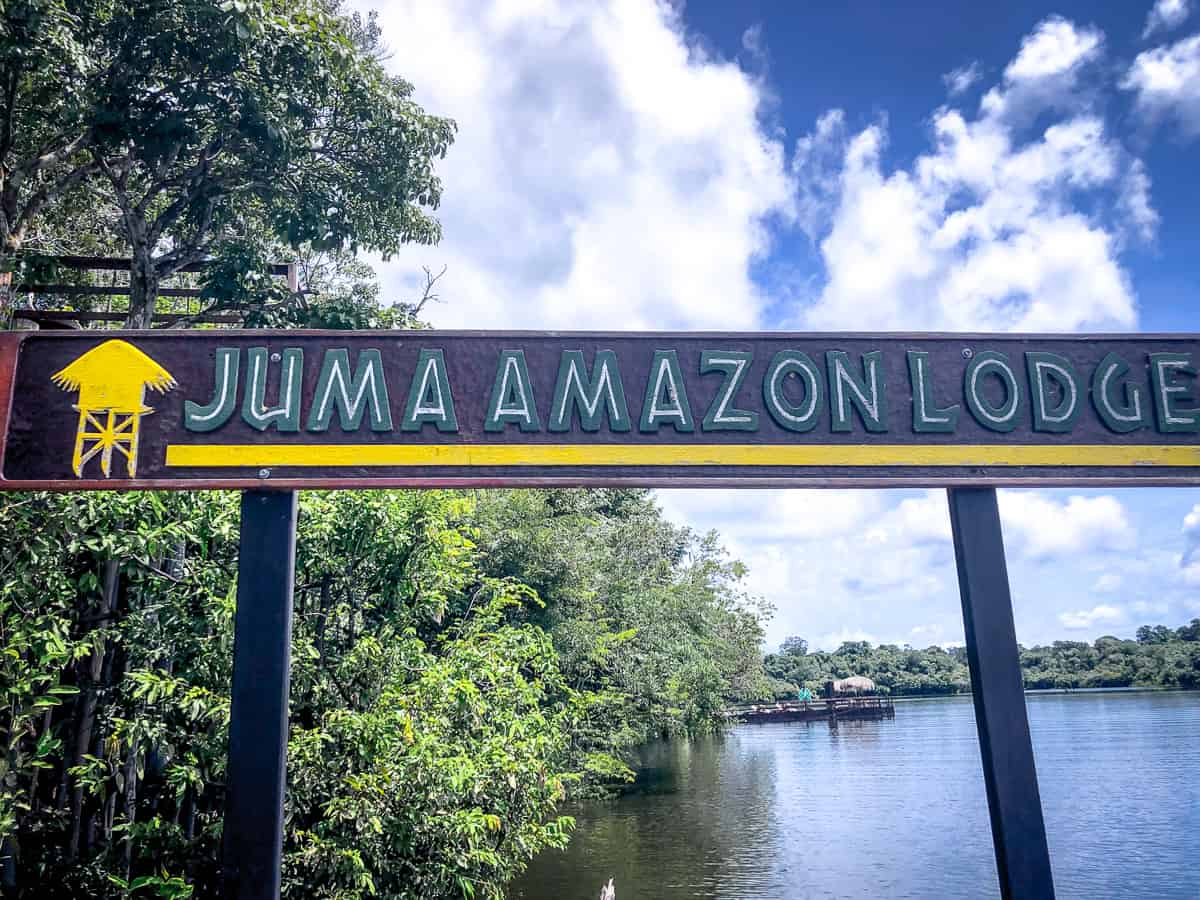
What Not To Do in the Amazon Rainforest
The list of what not to do in the Amazon rainforest is long!
- Don’t do anything daft like drop litter, start fires or pour oil into the water
- Don’t pee in the water (people drink it)
- Don’t ignore your guides – they’re trying to keep you alive
- Don’t swim without wearing bathing suits. You will hear a lot about the penis fish and none of it is good!
- Don’t forget to check your vaccinations and health advice long before your trip
- Don’t expect ultra-fast wifi. Or indeed, any wifi necessarily.
- Don’t expose too much skin. Long sleeves and trousers are your friend.
- Don’t ignore the strength of the sun when it does appear. Pack sunscreen and a hat.
- Don’t forget to drink lots of water – it’s hot out there.
- Don’t forget to lock the door. Wild animals can and will come in (see my unfortunate incident here.)
- Don’t stress too much. Behave responsibly, travel responsibly and it should be as safe as travelling around your home country.
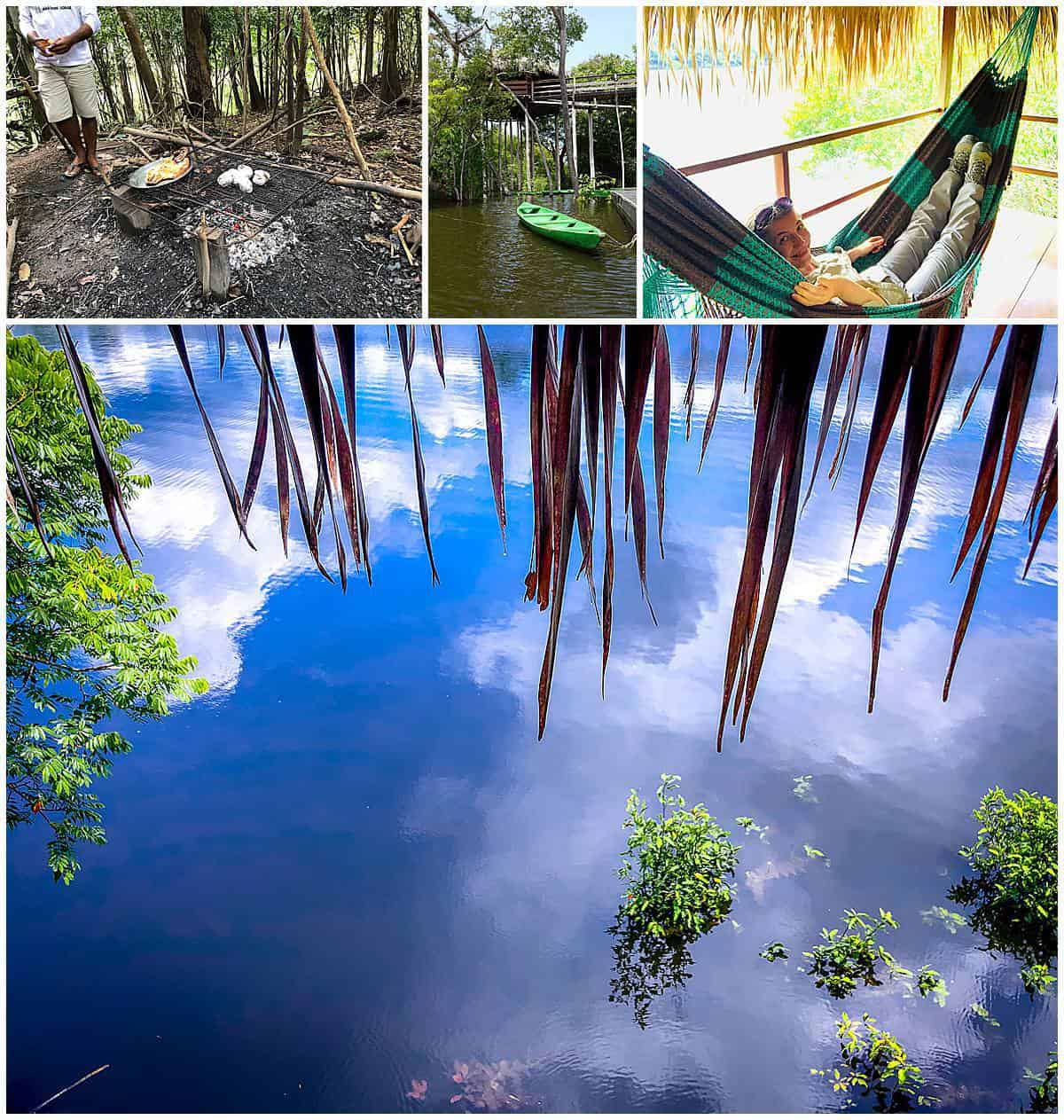
Practicalities
How to Get to the Amazon Rainforest
You can access the Amazon rainforest from any of the nine countries that contain it Ecuador, Colombia, Venezuela, Bolivia, Guyana, Suriname and French Guiana. But the two main ones are Peru (which holds 13%) and Brazil, of course, with its 60%.
In Brazil, the gateway city is Manaus, easily connected by air across the country, including to São Paulo and Brasilia. Flight times are around four hours and both airports have all the amenities you’d expect or need.
From Manaus, it is around three hours by boat and minivan to the Juma Lodge where we stayed. The journey was comfortable and largely beautiful – and arranged by the lodge.
You also have the benefit of crossing the meeting of the waters as part of your commute. Nice travel if you can get it ;-)
It’s worth spending a few days in Manaus if you have the time. The architecture of the centre is an odd mix that confronts you with the beauty of colonial architecture and the ugliness of its history; the fresh food markets expose the vibrant side of city life and the Amazon MUSA museum helps give context for the trip ahead.
How to Arrange a Trip to the Amazon Rainforest
Flights
Search for flights to Manaus, via Brasilia or São Paulo with my favourite flight comparison site Skyscanner.
Getting Around
If staying at the Juma Lodge in the Amazon, they will arrange transfers by minibus and boat for you.
By Car
You won’t need one. Forget about it.
Where to Stay in the Amazon Rainforest
I would enormously recommend the eco-based Juma Lodge with its 19 bungalows on stilts and babaçu palm walkways and rooftops.
Owned by three Brazilians, it’s been running since 2002 and hasn’t lost a guest yet ;-) It also serves a mean pudim, a Brazilian special dessert.
What to Wear and Pack in the Amazon
With all the heat and humidity, it’s wise to pay attention to what you pack for your trip. I’ve written a separate packing list for the jungle for you here, with handy links to help you shop.
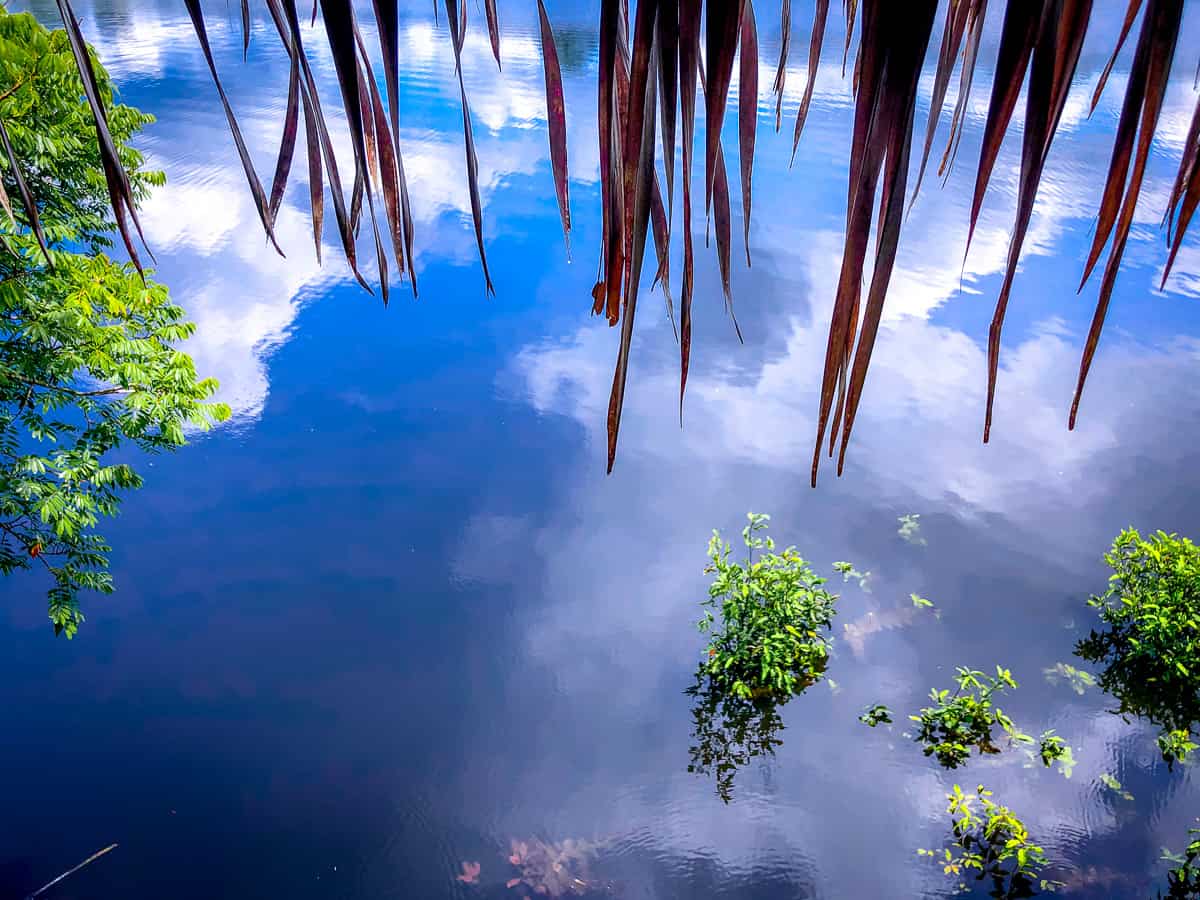
Fun Amazon Rainforest Facts
The Amazon river is home to these creatures adapted from the sea:
- The bull shark
- Manatees
- Pink river dolphins
- Grey dolphins
- Electric eels
- Stingrays
- And last but not least, a type of sardine
More From Latin America
- The ultimate Amazon travel tips for your next adventure
- A taste of Quito’s pre-colombian art is just what visitors need
- The oldest market in Quito has tales to tell
- Why the cloud forests of Ecuador matter to us all
- Did you know that people do this in Quito, Ecuador?
- What do the words Galapagos mean?
- Why you should visit Mexico with children
Top Tip! Work out what to wear in the jungle with this handy guide.
Disclosure – You know the drill, guys. I only write and publish what I want around here. That’s the whole beauty of it! That said, you should know that I travelled as a guest of Visit Brasil (all expenses covered) and that if you book or buy through some of the links on this page, I may earn a small (and I mean small) commission at no extra cost to you. Cheers!

